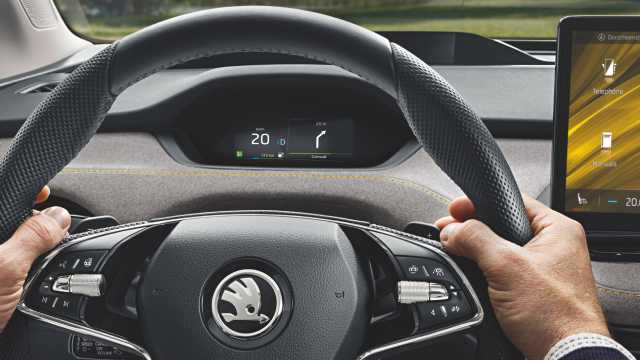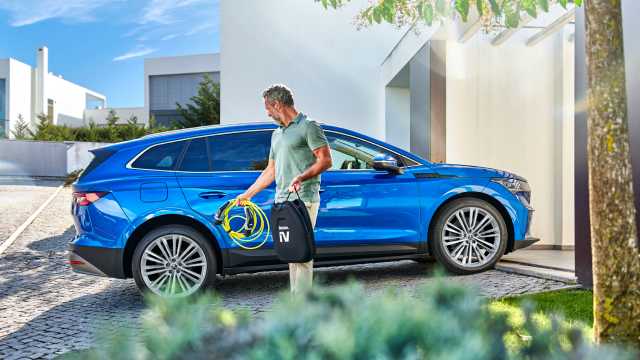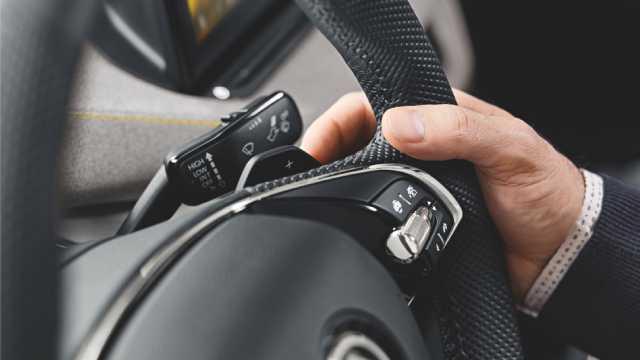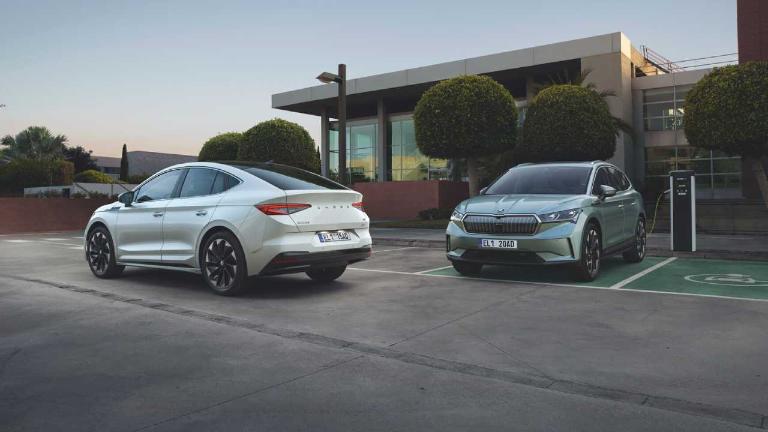First time behind the wheel of an electric car? Here's what you need to know
Range and charging are the two main topics when it comes to electric cars, but what are the other aspects to consider when switching to zero-emission mobility?
What do you need to know when you buy an electric car? What should one expect? Certainly a new driving experience and, at least initially, new habits and behaviors to get used to - but nothing to worry about.
The first thing that may surprise those driving an electric vehicle for the first time is that there is no need to start it up. Once onboard the ŠKODA Enyaq iV, for example, you just press the brake pedal and the car is ready to go. The indication appears on the Virtual Cockpit, and at that point you just put the car in Drive and set off. In the same way, when you reach the end of the journey you simply take your foot off the brake pedal and get out - the car deactivates itself.

Transmission and range
Electric cars do not have a transmission with different gears: just select forward or reverse motion, like in cars with automatic transmissions. The electric motor operates over a very wide range of revolutions, and maximum torque is immediately available, virtually at zero revs, so there is no need to shift gears.
Range improves with each new generation of electric cars; today the ŠKODA Enyaq iV can travel up to 547 kilometers on a single charge, enough to cover the vast majority of journey scenarios. Charging at home overnight or at work is ideal, while for longer journeys it is a good idea to check in advance to find charging stations where to stop, to partially or fully charge the battery. Range is affected by several factors, including driving style, speed and temperature, both outside and inside the car.

How does charging work?
There are two charging methods: alternating current (AC) or direct current (DC). AC charging is not as fast as DC charging; the power of the latter is related to the power supplied by the mains. Sockets in the household networks supply alternating current, which has then to be converted into direct current before 'getting' to the battery. If a three-phase socket is used, the power flow is greater and charging becomes faster; the wallbox is also AC-powered, but provides more flexibility in terms of power levels and advanced features.
The fastest way is DC charging using a charger designed specifically for electric vehicles. An additional aspect to consider is that charging is a non-linear process. A concrete example: in the case of the ŠKODA Enyaq iV with a 77 kWh battery, which supports a maximum charging power of 135 kW, it takes only 36 minutes to go from 10% to 80% at an ultrafast charging station, but the remaining 20% can take up to the same amount of time.
Charging in the city
There is a wide network of dedicated charging stations for electric cars across Europe. There are different types of connectors, but in the European territory they are standardized: the CCS connector - Combined Charging System - has become the standard for DC fast charging and is therefore installed in every fast and ultrafast station. The standard connector for AC charging, on the other hand, is the Type 2 or Mennekes, which is found both in the wallboxes and in the cable supplied with the car, and can be connected to 230 V two-phase and 400 V three-phase sockets.
How about payments at public charging stations? The best option is to sign up to a dedicated service - like ŠKODA Powerpass - that provides access to a very large number of charging points operated by major providers, including IONITY ultrafast stations. All charging and payments details are available in one app. On Enyaq vehicles with the most up-to-date software, at compatible charging stations charging starts automatically by connecting the charging cable to the car, without any further steps, thanks to the Plug & Charge function that enables intelligent dialogue between the charging station and the vehicle: this function will be available for all new ŠKODA electric cars based on the MEB platform.

Energy recovery
One notable features of electric cars is so-called regenerative braking, which is the ability to recover kinetic energy during deceleration and turn it into electricity that recharges the battery. In ŠKODA Enyaq iVs, the intensity of recuperation can be adjusted to three different levels via the paddles under the steering wheel. Alternatively, B (Brake) mode can be selected to directly activate the most powerful level. A fully automatic mode can also be set, leaving the management to the car itself.
Energy recuperation radically changes the driving experience: at the strongest level, the car starts to slow down as soon as the accelerator is released, immediately activating the process - to the benefit of range.
Maintenance and lifespan
The battery of an electric car is designed to last as long as the vehicle; of course, driving style, car care and adherence to maintenance schedules affect the overall efficiency of the vehicle. In any case, batteries in ŠKODAs are guaranteed not to drop below 70% of their original capacity for 8 years or 160,000 kilometres.
Source: ŠKODA
VGI | Responsible OU: VP | Creation date: article date | Class 9.1
